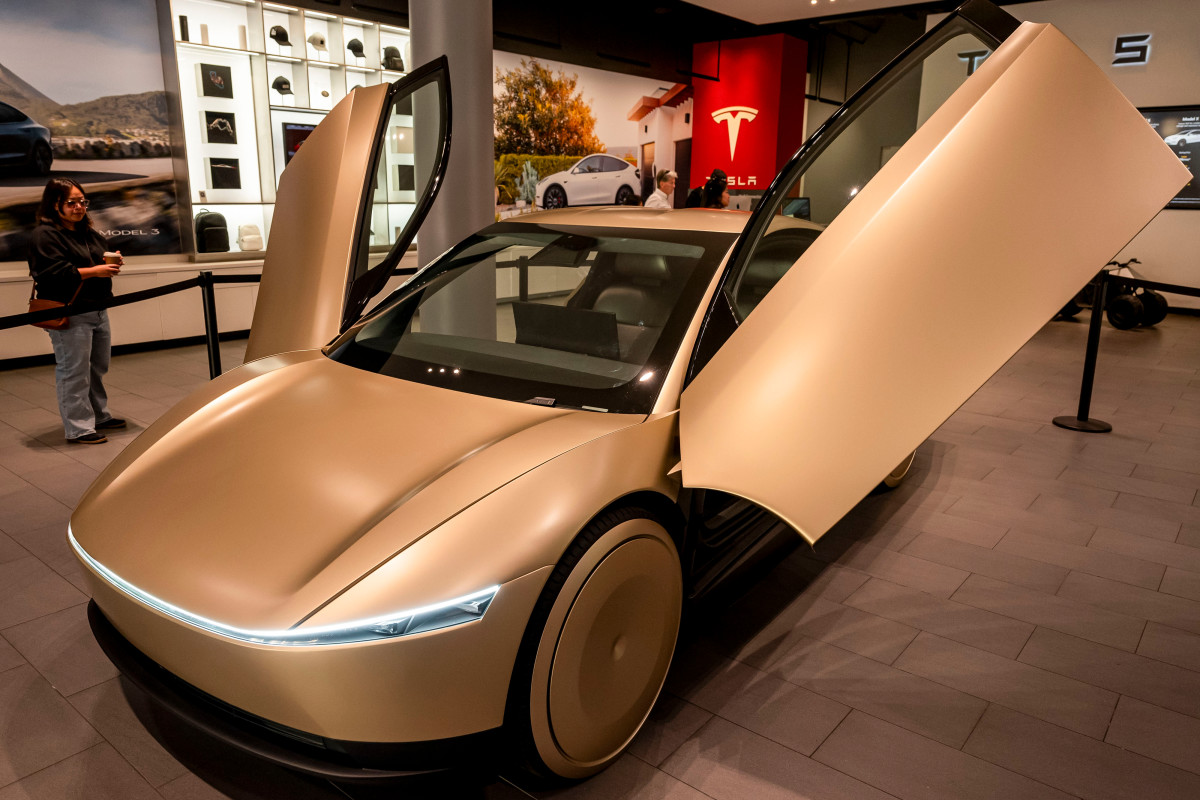American streets are going to look a lot different in a decade as autonomous driving becomes more ubiquitous.
This summer, the autonomous driving landscape in at least one location is about to get much more crowded when Tesla (TSLA) unveils its robotaxi capabilities in June.
💵💰Don’t miss the move: Subscribe to TheStreet’s free daily newsletter 💰💵
During the company’s earnings call last month, CEO Elon Musk announced that the company’s robotaxi program would begin testing in the company’s adopted home of Austin, Texas.
Tesla has stated that its robotaxi program will allow owners to make passive income by allowing their vehicles to operate autonomously as ridesharing vehicles.
But the company also announced during April’s earnings call that the futuristic-looking Cybercab won’t be coming anytime soon. Instead, any Tesla with Full Self-Driving capabilities can be converted into an autonomous vehicle.
Related: Analyst overhauls Tesla stock forecast amid tariff tussle
“We should parse out the terms for robotic taxi or robo taxi. We’ve got a product called a Cybercab, and then any Tesla — which could be an S, 3, X, or Y — that is autonomous is a robotic taxi or robo taxi,” Musk said before immediately adding that the whole thing was “very confusing.”
But the bottom line seems to be that if you own a Tesla with FSD capabilities, your vehicle could potentially be a robotaxi, starting in June in Austin.
Tesla won’t be the only autonomous vehicle riding around Austin this summer. Robotaxi rival Waymo will also be in Austin, as it has been for years, and on Monday, it announced plans to expand its reach.
 Tesla Cybercabs won’t be on U.S. streets anytime soon.
Tesla Cybercabs won’t be on U.S. streets anytime soon.
Waymo to expand US fleet in 2026
Waymo already has a head start on full autonomous driving, as the company has been testing its fleet in real-life street situations for years.
Today, Waymo One registers over a quarter of a million paid weekly trips across Phoenix, San Francisco, Los Angeles and Austin, with plans to expand to Atlanta, Miami, and Washington, D.C. in 2026.
Waymo’s current fleet features over 1,500 vehicles spread across its four current host cities, but by next year, it expects to more than double its fleet with more than 2,000 new additions.
The company, which is a subsidiary of Alphabet (GOOGL) , is relying on a new, 239,000-square-foot factory outside Phoenix in Mesa, Arizona, to integrate thousands of Jaguar I-PACE vehicles with Waymo’s fully autonomous technology. The factory is a joint venture between Waymo and mobile tech company Magna International.
“The Waymo Driver integration plant in Mesa is the epicenter of our future growth plans,” said Ryan McNamara, vice president of operations for Waymo. “With our partners at Magna, we’ve opened a manufacturing site that enables the cost efficiency, flexibility, and capacity to scale our fleet to new heights.”
Related: U.S. government backs Tesla as backlash turns criminal
Robotaxis assembled at the Mesa facility will be able to drive themselves out of the facility and directly into service. Waymo promises the vehicles will be able to pick up their first passengers less than 30 minutes after leaving the factory floor.
Waymo is teaming up with Jaguar for the future of driverless vehicles
The company recently said that it received its last delivery of the Jaguar I-PACE SUVs that will make up a large chunk of its driverless fleet.
Waymo has been using the I-Pace as its primary vehicle since 2023, when it retired its fleet of Chrysler Pacifica minivans.
The company recently published a research paper showing its vehicles, with over 56.7 million miles driven, had 96% fewer injury-involving intersection crashes, which are the leading cause of severe road harm for human drivers, according to the National Highway Traffic Safety Administration.
More Tesla news:
- Analyst slashes Tesla price target for an unexpected reason
- General Motors is set to overtake Tesla in one key area
- Tesla, Elon Musk make drastic decision amid U.S.-China trade war
Waymo also reported 85% fewer crashes with suspected serious or worse injuries.
“It’s exciting to see the real positive impact that Waymo is making on the streets of America as we continue to expand,” said Mauricio Peña, Waymo’s Chief Safety Officer. “This research reinforces the growing evidence that the Waymo Driver is playing a crucial role in reducing serious crashes and protecting all road users.”
Related: Veteran fund manager unveils eye-popping S&P 500 forecast
